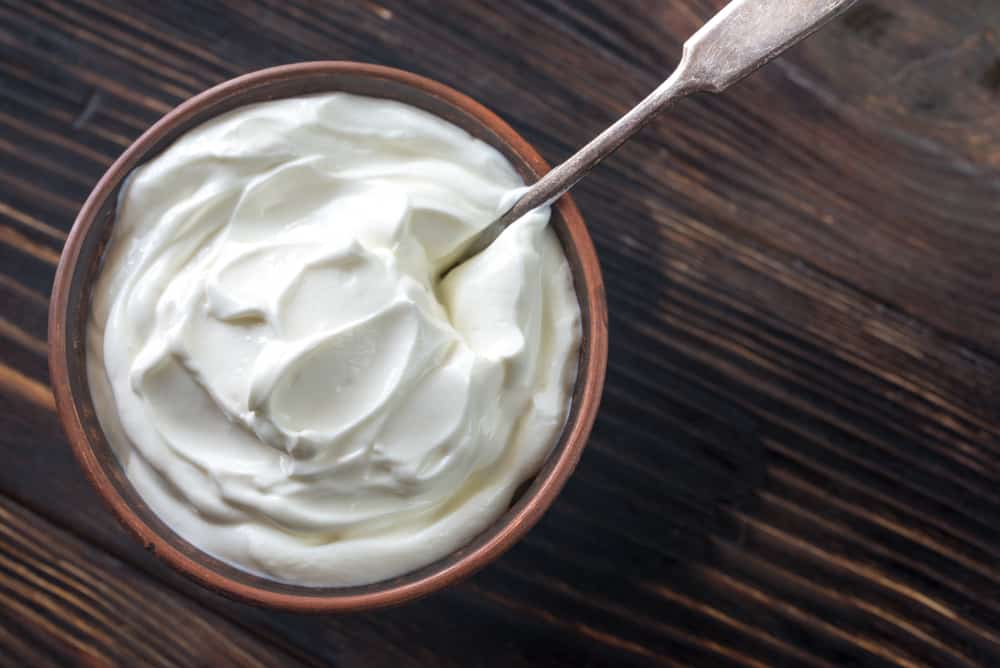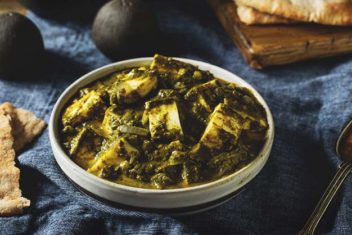Crème fraîche, French for “fresh cream,” is a popular and versatile kitchen ingredient. It adds a creamy texture and zingy flavor to numerous dishes. Even better? You can make it right at home with just a few ingredients.
If you’ve been to a supermarket recently, you’ve probably noticed that crème fraîche is pricey. Making your own saves you cash, plus you can decide what goes into it. No funky, hard-to-pronounce ingredients.
Keep reading to find out how to make this delicious ingredient and how to use it in your next cooking experiments.
What Is Crème Fraîche?
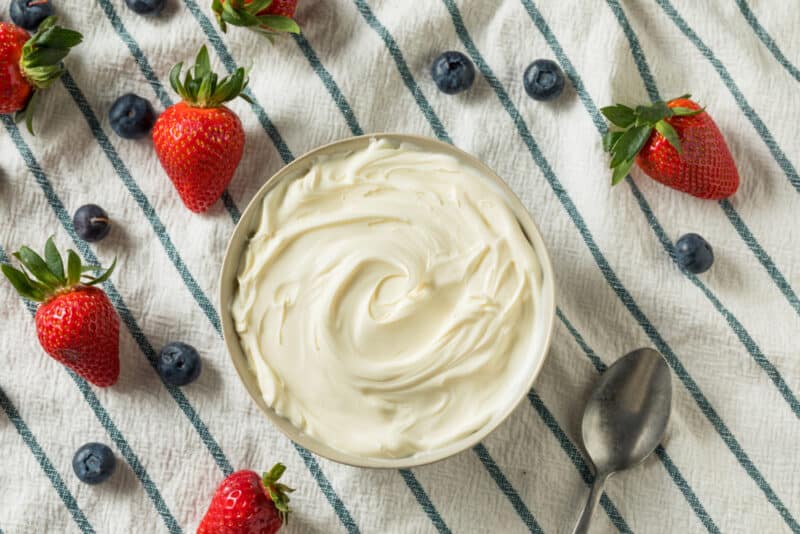
It can be confusing to understand the difference between crème fraîche, regular cream, crema, yogurt, and sour cream. These dairy products are made from bacteria cultures and cream, but each tastes different.
Compared to some yogurts, one of the most popular forms of fermented milk in the world, or sour cream, crème fraîche has a thicker, creamier consistency that makes it stand out. In eastern Europe, sour cream is a common ingredient used in cooking.
Traditionally, sour cream was made by leaving cream at room temperature until partially fermented. Then, the acid produced by lactobacilli acted as a preservative and created a thick, tangy flavor.

In contrast, crème fraîche is thicker and has a higher fat content. This means when you cook with crème fraîche, you don’t need to worry as much about the curdling, which makes it ideal for throwing in sauces for portions of pasta or stews.
Sour cream tends to curdle in heat, so it’s often supplied as a side dish for dipping and serving on a plate to complement other flavors rather than used in recipes.
Crème Fraîche vs Crema Mexicana
Another common comparison with crème fraîche is crema Mexicana. This is a slightly sweet, thick cream that’s often confused with crème fraîche. To create crema Mexicana, you need the help of mesophilic bacteria.
It’s also possible to make this cream product at home using buttermilk. The good thing about Crema Mexicana is that it can also be included in cooking as it doesn’t curdle.
Of course, the choice is personal, but crème fraîche is the better choice for a tangy, thick texture. Crema Mexican is a bit thinner.
Now that you know about the crème fraîche and how it compares to other dairy products, let’s move on to making it at home.
How To Make Crème Fraîche
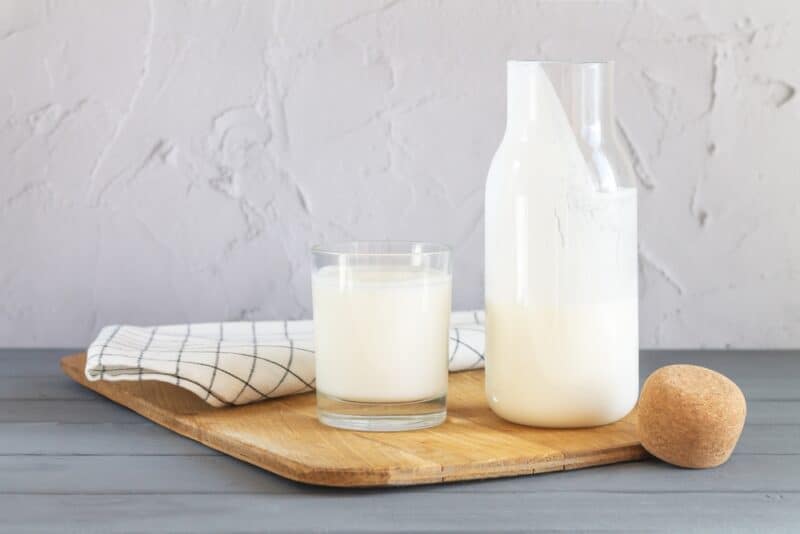
You only need a few ingredients to get started with this recipe. You’ll need buttermilk and heavy cream.
You also need to have a container to hold the finished product. Grab a jar or small bowl. A jam jar is perfect if you already have some in your house, but you can also recycle honey jars, fruit pots, or anything you can find in your kitchen.
Then, you’ll also need a cheesecloth or towel.
To make about two cups, use two cups cream and three tablespoons buttermilk.
Start by pouring the cream into a jar or bowl. Next, pour the buttermilk into the bowl or jar. Stir gently to combine the two ingredients.
Some people find that 2 tablespoons of buttermilk aren’t enough to get the mixture thick, so you might want to add an extra tablespoon. You can always alter the recipe to suit your individual tastes.
Finally, cover the jar or bowl with cheesecloth or a thin towel. Place the jar in a warm location for at least 12-36 hours to allow the mixture to bind together. Once you notice the mixture thicken to the texture you like, you can seal it with a lid on the jar.
Move the jar of crème fraîche to the fridge to until you’re ready to use it.
Making crème fraîche isn’t complicated; it’s all about practicing and nailing down the consistency you want through trial and error.
Tips for Making Crème Fraîche
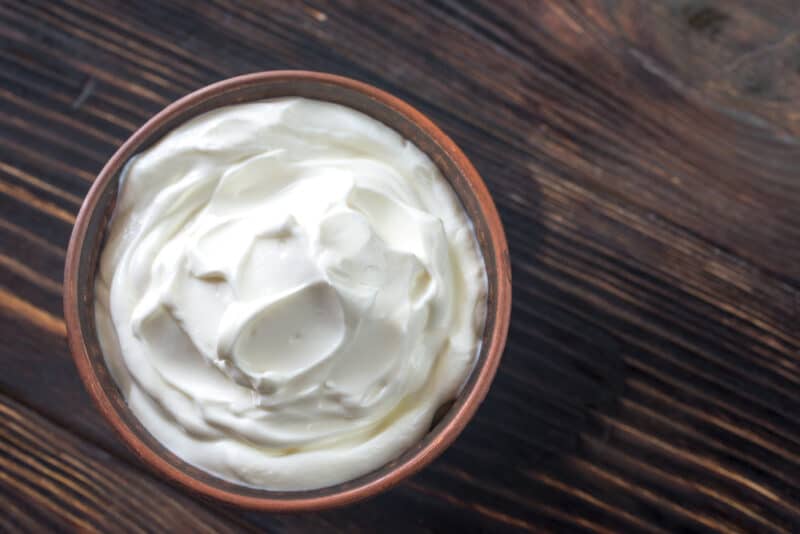
Generally, you should avoid placing the jar of crème fraîche somewhere cool. Don’t be afraid to place it near a fire stove or radiator. This is the best way to speed up the process and ensure it becomes thick.
The mix needs to be somewhere around 70-75°F.
It’s best to check on the mixture every 6-12 hours as this allows enough time between observing for the cream to thicken and for you to see results. Any less than that, and you won’t be able to notice much of a difference. Usually, it only takes 24 hours to set.
If you live somewhere that experiences freezing winters, it’s a good idea to make crème fraîche when the weather is slightly warmer. You can pick a sunny day or wait until spring or summer.
But if you just can’t wait, place it near an oven or on top of the fridge. Don’t put it in front of an air register, though, or it might dry out.
Using Crème Fraîche at Home

After you’ve prepared your crème fraîche, it’s time to use it in your kitchen!
To give you some inspiration, this section covers the best recipes for crème fraîche that you can start using straightaway!
Crème Fraîche Chicken
There’s nothing better than a creamy chicken meal after a long day working on your homestead or tending to your plants. So, why not throw some homemade crème fraîche into your chicken dish?
All you need is the following ingredients:
- 4 chicken breasts
- Olive oil
- Crème fraîche
- Wholegrain mustard
- 2 cloves of garlic
- Thyme (dried or fresh)
- Chicken stock cube
- Parmesan
- Baby spinach
This is a great recipe if you have friends or family coming over for a meal or want to cook something simple and nutritious. Drizzle olive oil in a large casserole dish and brown the chicken.
Cook the garlic cloves and thyme together in a frying pan for two minutes with a little olive oil. Pour in the stock, mustard, and crème fraîche and whisk until it becomes creamy.
Add the grated parmesan for a little cheesy flavor. Then, add the chicken and baby spinach and allow the ingredients to simmer. Finally, season with pepper and additional spices and serve.
Mushroom Linguine With Crème Fraîche Sauce
If you don’t eat meat, there are still some delicious options for using crème fraîche. For example, you can make mushroom linguine with crème fraîche with simple ingredients.
Here are the main ingredients for this recipe:
- Mushrooms (white or brown)
- 2-3 garlic cloves
- 1-2 shallots
- Fresh or dried thyme/parsley
- Long pasta (linguine, spaghetti, or fettuccine)
- Lemon juice
- Crème fraîche
- Crushed red chili
- Parmesan shavings
Start by frying the mushrooms in a pan with a drizzle of olive oil. Ideally, you want to use a non-stick pan, making it easier to fry the mushrooms. Once the mushrooms are soft, you can fry the garlic and shallots with them.
On the side, you can boil the pasta, so it’s ready at the same time as the mushrooms. Then, add the lemon juice (a teaspoon) and crème fraîche. Finish by combining the pasta with the mushrooms sauce.
Grab some pasta bowls and serve this amazing meal.
Add It To Dishes
You can use crème fraîche for both sweet and savory dishes.
For example, here is a list of savory dishes that go perfectly with crème fraîche:
- Add to a pasta sauce for a creamy texture
- Make a dip for vegetables using herbs
- Spread on pizza as a substitute for tomato sauce
- Mix into a savory like a quiche or onion tart
But if you have more of a sweet tooth, these options are for you:
- Fruit cocktail topping
- Use for strawberry tarts
- Decorate other desserts with a spoonful
- Top ice cream
Crème fraîche is an excellent choice for cooking as it doesn’t curdle but also provides wonderful flavor.
It’s also perfect for low-carb diets and is full of probiotics which is great for your gut health.
